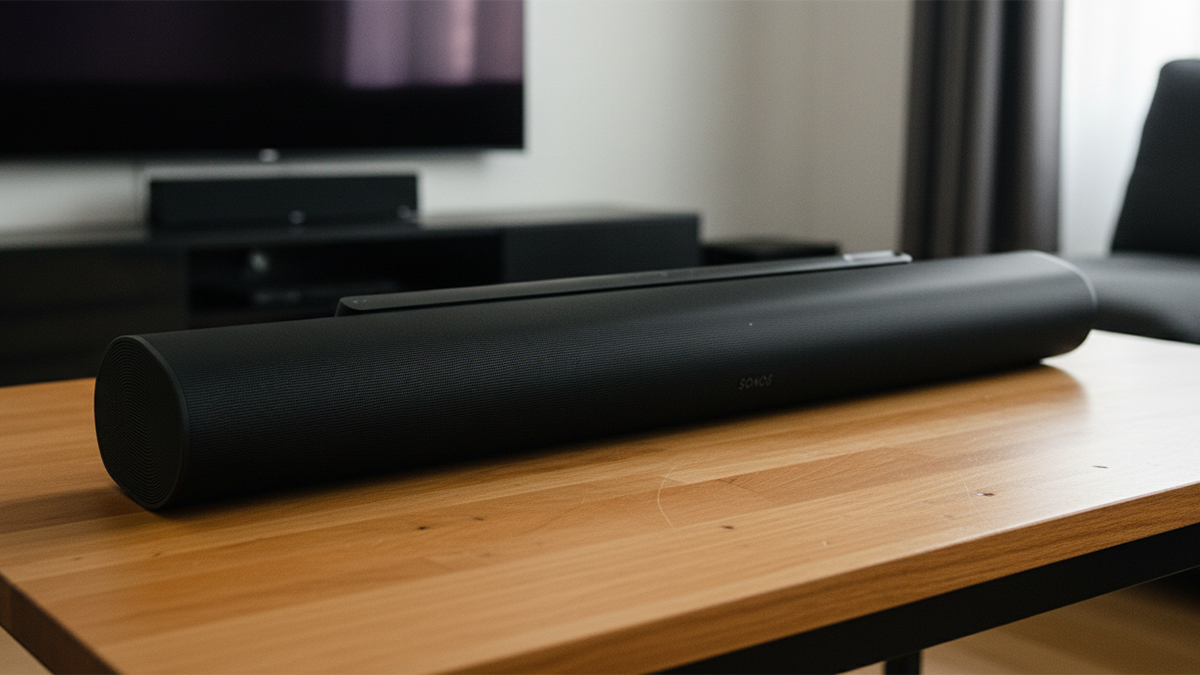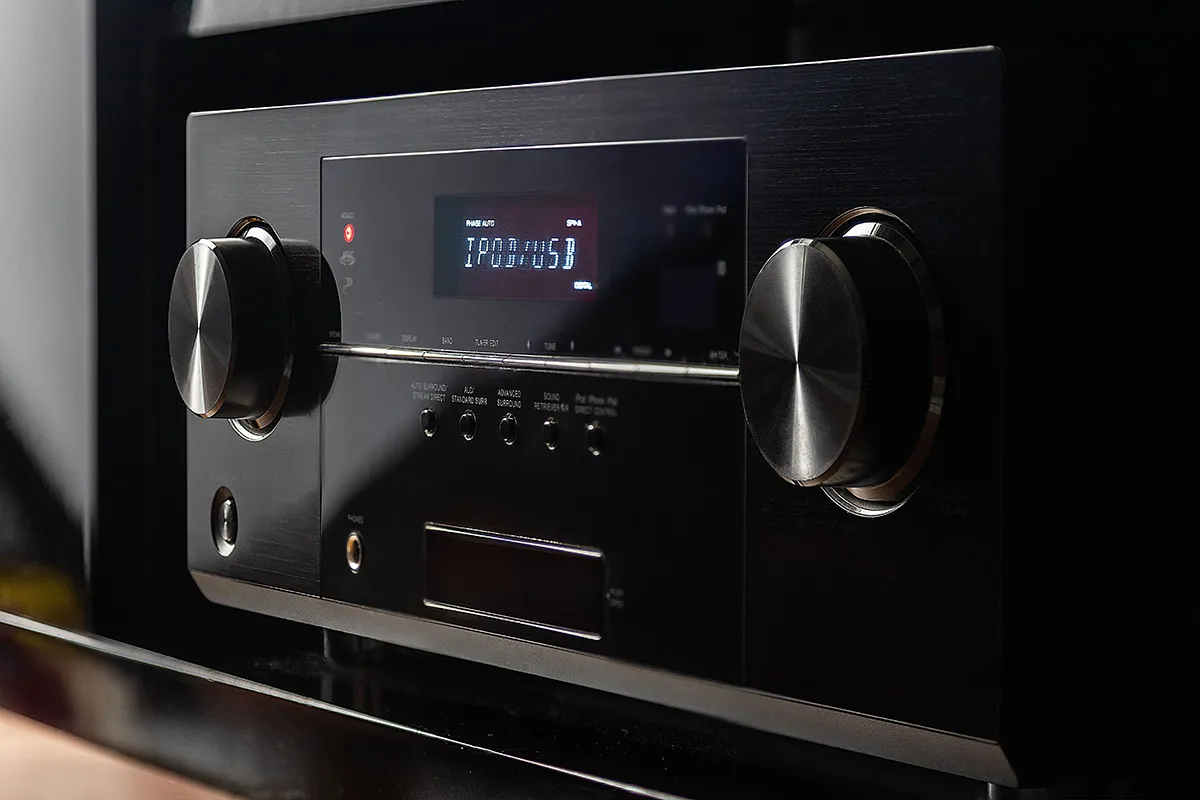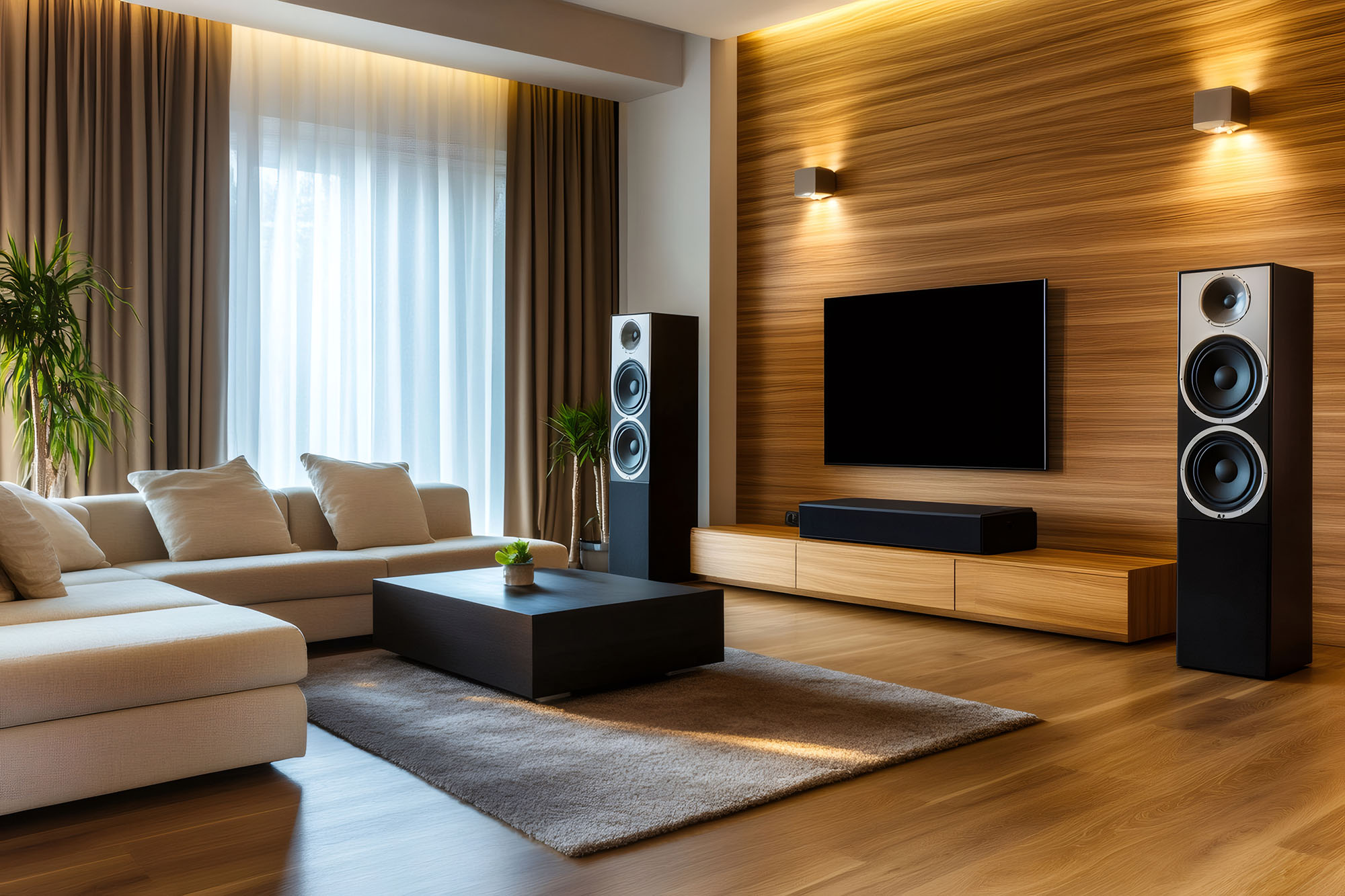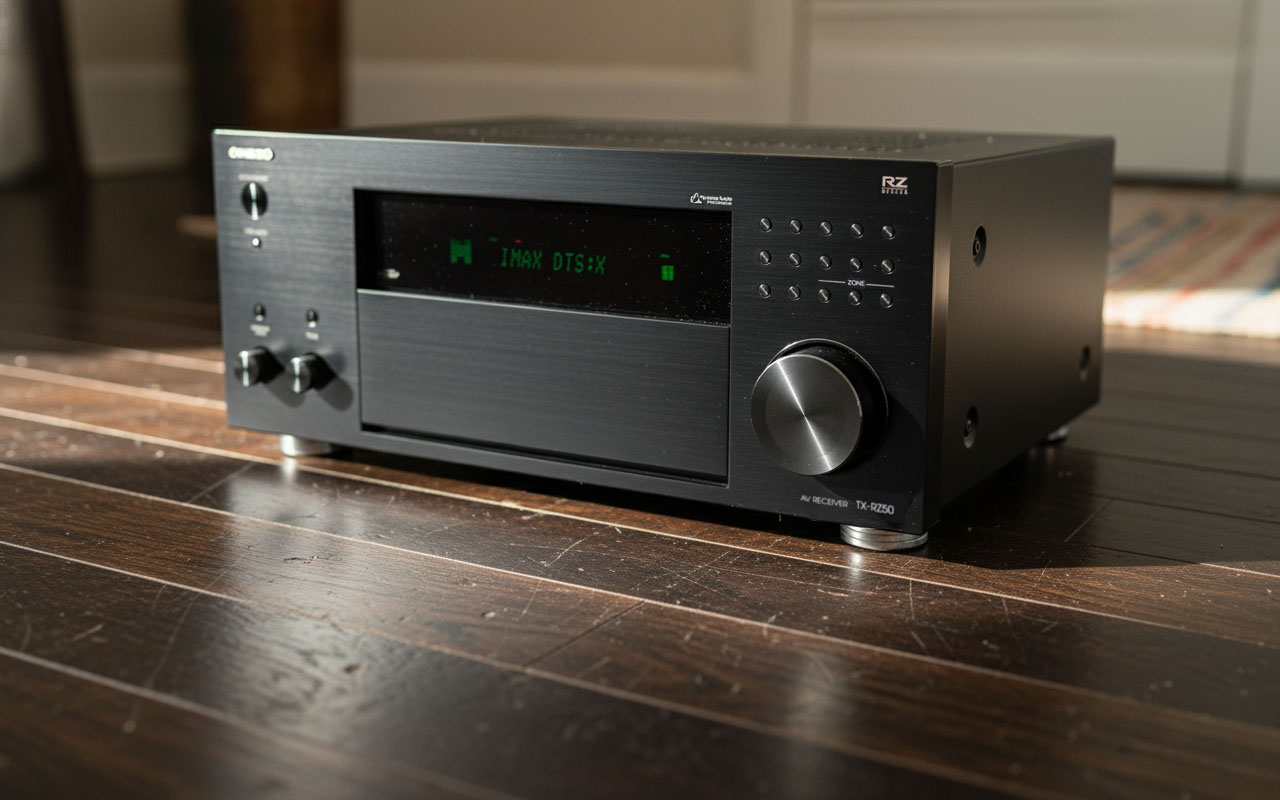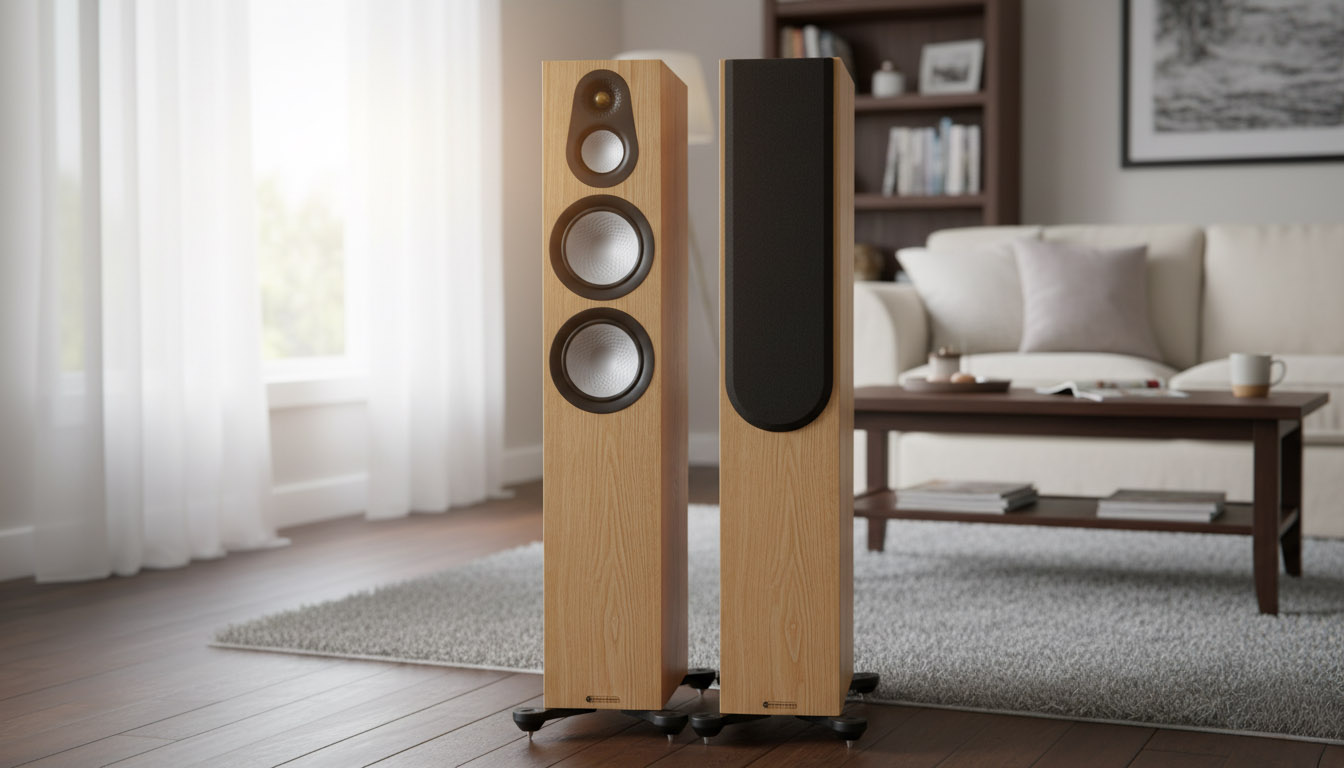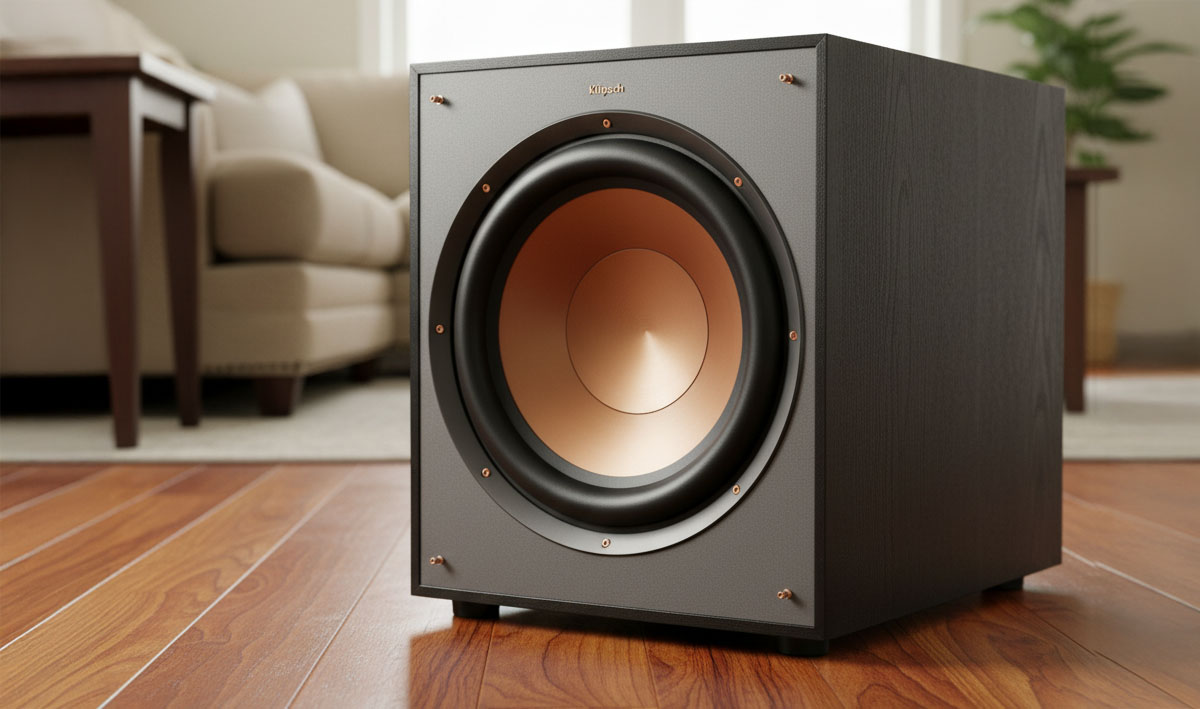Quick Take
Klipsch’s R-100SW is a straight-shooting 10-inch, ported sub with real punch for small and mid-size rooms. Owners praise the impactful, room-friendly bass, simple setup, and easy integration with typical AVRs. The trade-offs are predictable: extension bottoms out in the low 30s, placement matters to avoid boom, and home-theater fanatics may want a deeper-reaching 12-inch box. If you want a reliable, easy-to-dial-in sub for everyday movies and music, the R-100SW delivers without drama.
Pros
![]() Powerful output for a compact 10-inch design
Powerful output for a compact 10-inch design
![]() Easy integration: variable low-pass, 0/180° phase, LFE/line-in
Easy integration: variable low-pass, 0/180° phase, LFE/line-in
![]() Tight, punchy mid-bass that energizes small and mid-size rooms
Tight, punchy mid-bass that energizes small and mid-size rooms
![]() Clean, fuss-free setup and auto-on convenience
Clean, fuss-free setup and auto-on convenience
![]() Solid value as a first sub or secondary room system
Solid value as a first sub or secondary room system
Cons
![]() Doesn’t dig as deep as larger ported subs
Doesn’t dig as deep as larger ported subs
![]() Rear port can sound boomy if pushed too close to walls
Rear port can sound boomy if pushed too close to walls
![]() Some users note “one-note” bass if placement/phase are ignored
Some users note “one-note” bass if placement/phase are ignored
![]() Basic feature set: no app, EQ, or room correction
Basic feature set: no app, EQ, or room correction
Introduction
A subwoofer’s real job isn’t just “more bass.” It’s adding the lowest octaves without smearing dialogue or muddying music. The Klipsch R-100SW aims squarely at that balance. It pairs a 10-inch spun-copper IMG driver with an all-digital amplifier rated at 150 watts RMS (300 watts peak) in a rear-ported MDF cabinet. The control set is the greatest-hits list you actually need: gain, a continuously variable low-pass crossover, a 0/180° phase switch, and auto power. On the back you’ll find LFE and stereo line-level RCA inputs for easy hookup to a modern AVR or a two-channel integrated with sub out. The official spec lists frequency response at 32–120 Hz (±3 dB), maximum acoustic output at 112 dB, and dimensions of 14.5 x 12.5 x 16.4 inches, with a weight of about 24 pounds. In other words, it’s a compact, practical sub intended for real living spaces.
Key Features of the Klipsch R-100SW Subwoofer
10″ front-firing IMG woofer. The injection-molded graphite cone is light and stiff, so it starts and stops quickly. In practice that means kick drums hit cleanly and bass guitar notes stay distinct instead of blurring together.
All-digital amplifier, 150 W RMS / 300 W peak. The onboard amp has the headroom to handle movie effects and dynamic music passages in small and mid-size rooms at sensible volumes. You get control and consistency without chasing external amplification.
Controls that matter. The variable low-pass lets you blend the sub to your mains whether they’re bookshelves or towers. A 0/180° phase switch helps align the sub’s wave with your speakers; when it’s right, bass tightens and imaging doesn’t bloat. Auto power wakes on signal and sleeps when idle.
Rear-ported, bass-reflex cabinet. The rear port adds efficiency in the mid-bass, translating to “more boom for your watt” when you place it well. Give the port some breathing room and you’ll get punch without overhang; cram it into a corner and you’ll trade quality for quantity.
Modern connectivity. Line-level/LFE RCA inputs make it plug-and-play with AVRs and many stereo amps that provide pre-outs. There are no high-level speaker inputs, which is fine for most contemporary systems.
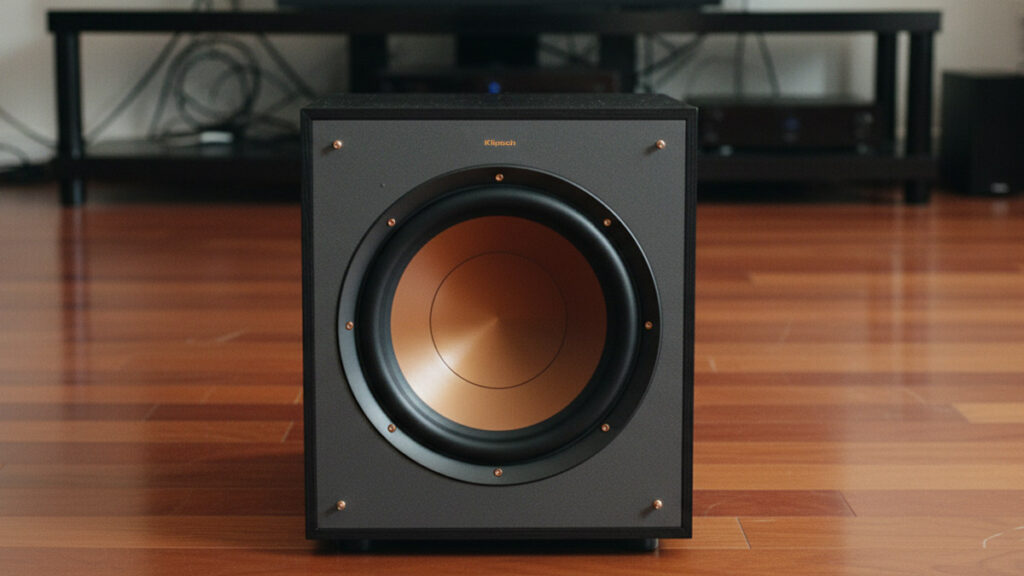
Sound Quality & Setup
Owners consistently describe the R-100SW as punchy, surprisingly loud for the size, and easy to integrate. Many report filling 12- to 20-foot rooms with satisfying impact once the crossover and phase are dialed in. Music gets that kick-drum thwack, bass guitar has body, and action scenes gain real weight. Users also like how quickly the sub “disappears” when level-matched; when tuned correctly, it supports rather than shouts.
The recurring caveats are equally consistent. Going much below 30 Hz isn’t this model’s strength, which aligns with its 32 Hz (-3 dB) rating. In bigger rooms or with bass-heavy movie tracks, you’ll hear good slam in the 35–60 Hz band, but not the couch-rattling low-20s effects you get from larger ported subs. A few reviews call the sound “boomy” out of the box; those nearly always trace to corner placement, too-high gain, or mismatched phase. Owners who nudged the cabinet a few inches, flipped the phase, or lowered the crossover reported tighter, cleaner results.
Against common alternatives, a pattern emerges from consumer chatter:
- Polk HTS 10 tends to reach a touch lower on paper and can sound fuller on the lowest notes, but it’s larger and heavier. Listeners often describe it as smooth and room-friendly, while the Klipsch feels snappier in the mid-bass and more immediate with music.
- JBL Stage A100P matches well on basic specs and keeps setup simple. Many shoppers describe it as clean and reliable, though not as “punch-first” as the Klipsch.
- SVS PB-1000/PB-1000 Pro out-gun the R-100SW on deep extension and output and are praised for room-shaking movie capability. They’re much bigger boxes in a different performance tier. Plenty of buyers pick the Klipsch for footprint and simplicity rather than absolute depth.
Who Is It For?
Choose the Klipsch R-100SW if you:
- want a first real sub for a living room, office, or bedroom system
- need plug-and-play integration with a modern AVR or 2-channel rig
- prefer tight, punchy mid-bass over ultra-deep theater rumble
- care about quick, clean setup more than app control or DSP
- have limited space and can give the rear port a few inches to breathe
If your room is large, your seating is far, or your movie nights demand sub-30 Hz fireworks, step up to a deeper-reaching 12-inch model or a higher-output 10-inch from a theater-focused line.
Tips for New Owners
- Start with placement, not the knob. Put the sub along the same wall as your mains, slightly off the corner, and 6–12 inches from the back wall to start. Slide it a few inches at a time until bass tightens and voices stay clear.
- Set levels the smart way. Turn the sub’s gain to about 10–11 o’clock, set the AVR’s sub level around 0 dB, then run your auto-setup (or use an SPL app). Fine-tune by ear after.
- Crossovers that blend. With bookshelves, begin at 80–100 Hz; with towers, 60–80 Hz. If voices get chesty, lower the crossover.
- Fix boom with phase and distance. Flip the phase switch and keep the setting that sounds stronger and cleaner at the seat. In an AVR, enter the true sub distance so time alignment is right.
- Respect headroom. If the sub sounds loud but loses definition, back off the sub gain a tick and raise the master volume. Clean dynamics beat sheer SPL.
- Use isolation feet or pads on wood floors. It tightens bass and keeps the neighbors marginally happier.
How the Alternatives Stack Up
Polk HTS 10
- Key specs: 10″ driver, ~100 W RMS / 200 W peak, ported with Power Port, rated down into the upper 20s on paper, ~38 lb.
- How it lands: Often described as smooth with a bit more perceived depth than some 10-inch peers. It’s physically larger and heavier; if you can spare the space and want fuller bottom-octave presence for movies, it’s a contender.
JBL Stage A100P
- Key specs: 10″ polycellulose woofer, 150 W RMS / 300 W peak, ~35–150 Hz response, rear-ported.
- How it lands: Straightforward and reliable. User notes point to clean performance and easy setup, though it typically doesn’t feel as punch-centric as the Klipsch in the upper bass.
SVS PB-1000 / PB-1000 Pro
- Key specs (PB-1000): 10″ driver, ~300 W RMS / 720 W peak, 19–270 Hz (±3 dB).
- Key specs (PB-1000 Pro): 12″ driver, ~325 W RMS / 820+ W peak, 17–260 Hz (±3 dB).
- How it lands: These dig decisively deeper and move more air. Owners gush about movie impact and even sub-20 Hz presence. They’re bigger, costlier, and more “home-theater first.” If low-20s output is your goal, this is the upgrade path.
Final Thoughts
The Klipsch R-100SW Subwoofer is the kind of sub that makes a basic system feel finished. It’s not a bragging-rights monster, and it doesn’t pretend to be. What it delivers is the bass most people actually need: punch for music, weight for TV and movies, and a setup that takes minutes, not weekends. In small to medium rooms, it’s an easy recommendation. If you later want more depth, keep the R-100SW as a second sub for smoother bass across seats and bring in a larger partner. That’s a practical upgrade path many owners follow.
FAQ
Does the R-100SW need a special receiver?
No. Any AVR or integrated amp with a mono LFE or stereo pre-out will work using the RCA inputs.
How big is it?
About 14.5 inches high, 12.5 inches wide, and 16.4 inches deep, weighing roughly 24 pounds. Compact, especially for a ported 10-inch.
Will it wake automatically with my TV?
Yes. The auto-on feature senses input signal and powers up. If you watch at very low volume, you may prefer leaving it on.
What crossover should I use?
Start at 80–100 Hz with bookshelves, 60–80 Hz with towers, then tweak by ear so voices don’t thicken and bass lines stay even.
Is one R-100SW enough for my room?
For small and most medium rooms, yes, especially at typical listening levels. Big rooms or bass-centric movie nights benefit from either a larger model or dual subs.
Why does it sound boomy in the corner?
Corners add room gain. Pull the cabinet a few inches forward, lower the gain slightly, and recheck phase. Boom should tighten into punch.
How does it handle music vs movies?
Music gets taut, rhythmic bass. Movies gain weight and slam, though you won’t get ultra-low, low-20s effects like a larger ported 12-inch.
Teksignal.com participates in the Amazon Services LLC Associates Program, an affiliate advertising program designed to provide a means for sites to earn advertising fees by advertising and linking to Amazon.com. The reviews on this site are hands-off consensus reviews. We analyzed owner feedback across the internet and manufacturer documentation. We summarize sentiment; we do not republish individual user posts.



